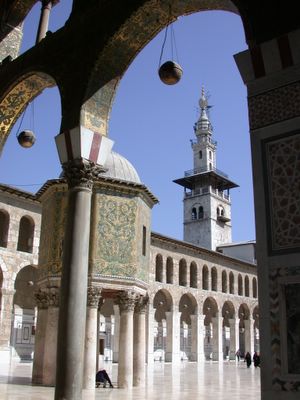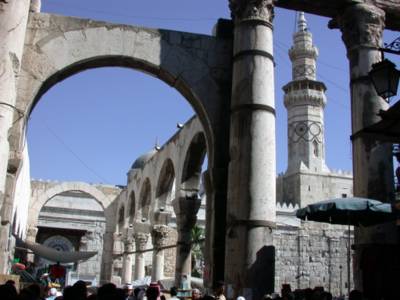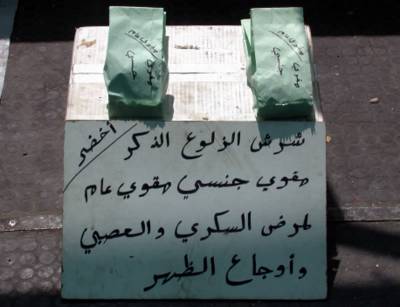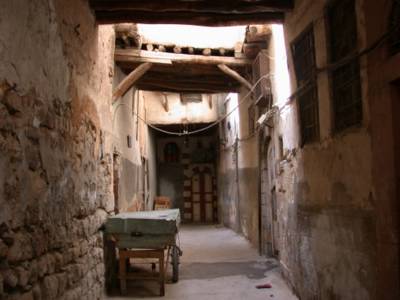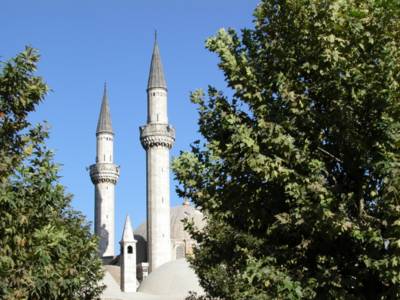
The bronze colonnade in Marjeh square was erected in 1907 to commemorate the opening of the first telegraphic link in the Middle East - the line between Damascus and Medina (now in Saudi Arabia). On this spot, on May 6, 1916, Ottoman authorities hanged tens of Arab national leaders who called for independence from Turkey. Since then, Marjeh Square has been known as Sahet al-Shuhadaa - Martyrs' Square. The plate on the base of the colonnade is in Turkish, which used to be written in Arabic script until Kemal Ataturk ordered a change to a modified Latin alphabet in 1928.






